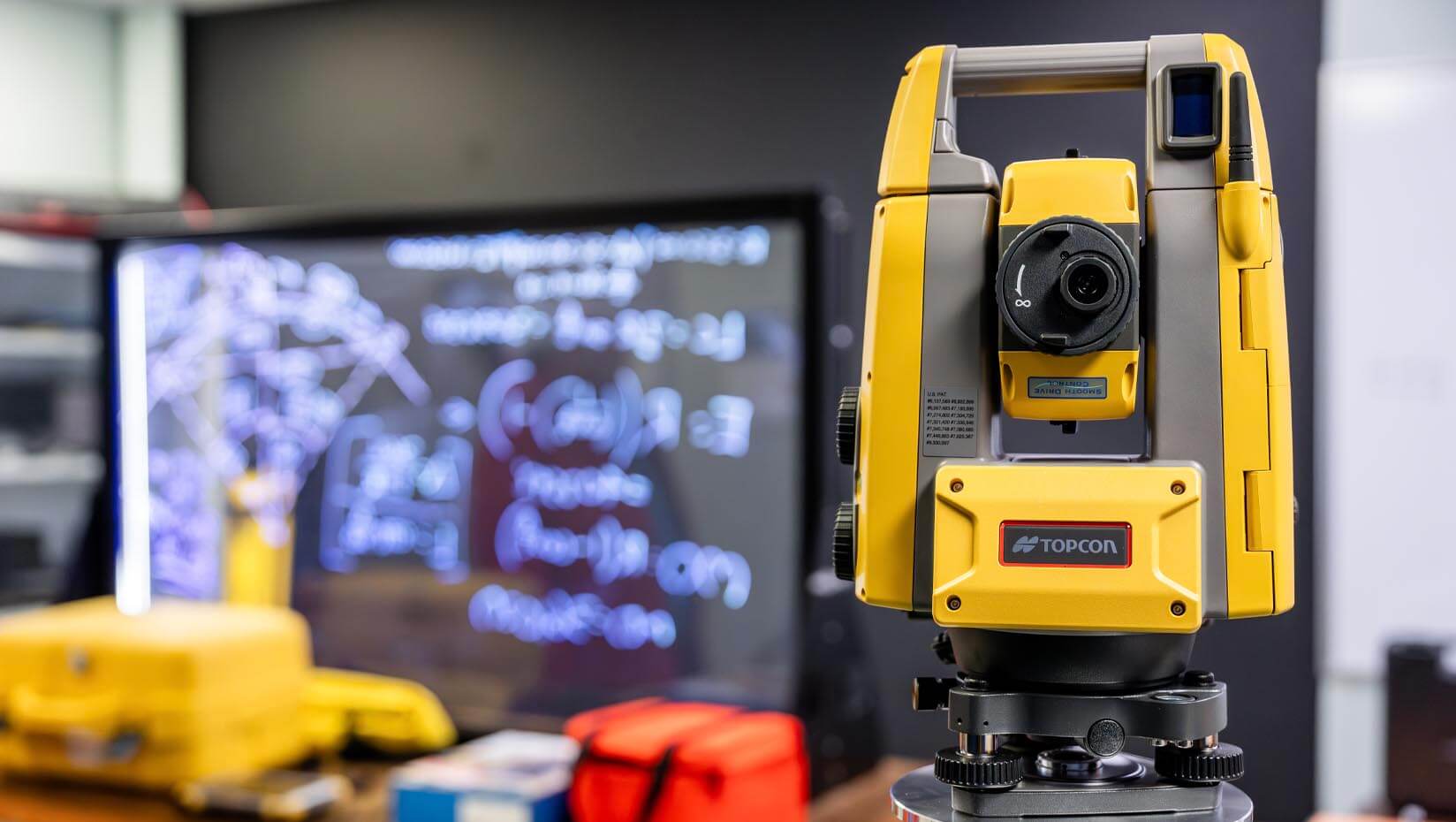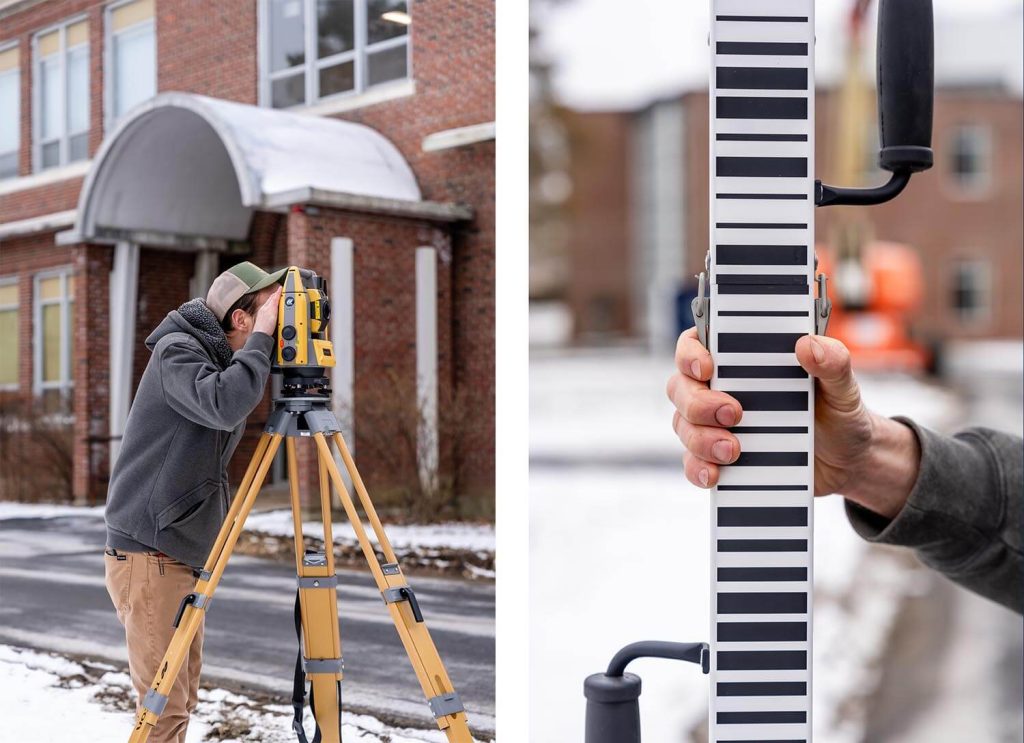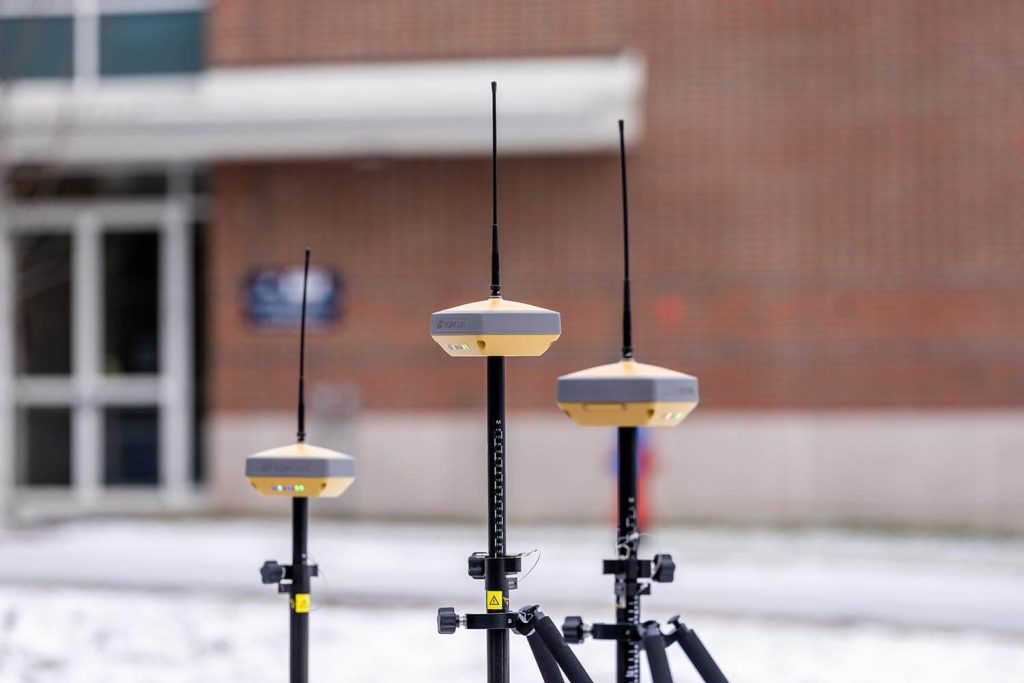
UMaine’s surveying program receives equipment loan valued at $1.7 million
The University of Maine’s Surveying Engineering Technology (SVT) program has received an equipment loan valued at $1.7 million from Topcon Positioning Systems Inc., an industry-leading designer, manufacturer and distributor of precision measurement and workflow solutions headquartered in Livermore, California.
The university’s SVT program, which has the largest number of undergraduate students per faculty in the Maine College of Engineering and Computing (MCEC), will receive 12 robotic total stations (electronic/optical instruments for surveying and building construction), 12 digital levels,12 multi-constellation GPS receivers, tablets, software and accessories at no cost. As part of the agreement, Topcon will maintain, update and replace the equipment (if necessary) every three years. This agreement was made to ensure the program’s students receive instruction with the latest surveying technology as part of the Topcon Learn/Apply/Build (LAB) initiative.

“We are excited to initiate the relationship with the University of Maine. It is our latest Learn/Apply/Build investment, partnering with leading survey educational programs around the world to provide state-of-the-art technology to advance learning,” said Ron Oberlander, vice president of Topcon global professional services. “The University of Maine program has the potential to support the education of surveying engineers across the globe. The world needs more surveyors from a diverse range of backgrounds, and we are delighted that our support will help this become a reality. Surveying students learning on campus and online will benefit from having access to the latest technology and software to support their studies.”
Because surveyors make precise measurements to determine property boundaries, understanding how to use the equipment to make those measurements is a primary function of the career.
“Surveyors are in charge of searching for spatial truth. A surveyor is kind of a detective,” said Ray Hintz, professor of surveying engineering technology.
In addition to helping those students complete the program in person, this equipment supports SVT online education, enrollment for which has increased by over 130% since 2019. Providing access to the latest surveying technology is part of the program’s strategic effort to recruit students.

“The volume of equipment helps us be more efficient in teaching labs,” said Rich Vannozzi, assistant professor in surveying engineering technology. “For 150 years, if you took a survey class, you worked in a little group of three or four people with one piece of equipment. So say you had a two-hour lab and four people, everybody got a half hour with their hands on the equipment. What we found out is that if we ran the labs more frequently, and every student had a piece of equipment of their own for the whole two hours — they had their hands on it — they got four times as much time and they were 100% engaged.”
According to the Bureau of Labor Statistics, employment of surveyors is projected to grow 5% from 2022–32, faster than the average for all occupations. With fewer than 48,000 licensed surveyors nationwide and many expected to retire in coming years, the demand for surveyors is only expected to grow.
“There are two phenomena that are driving a critical need for surveyors nationally,” Vannozzi said. “One is aging out of the profession. The other thing driving the demand is that we need educated surveyors. There was a time 40 years ago when you could enter this profession and have a successful career with a minimal amount of formal education. That is not realistic any more. If you want to have a successful 40-year career as a land surveyor, you will need a bachelor-degree-level education.”
Joe McNichols, assistant professor in surveying engineering technology, will organize and manage the equipment. A ribbon cutting will be held in the spring to celebrate the donation and the updated equipment storage room.
Contact: Shelby Hartin, shelby.hartin@maine.edu
